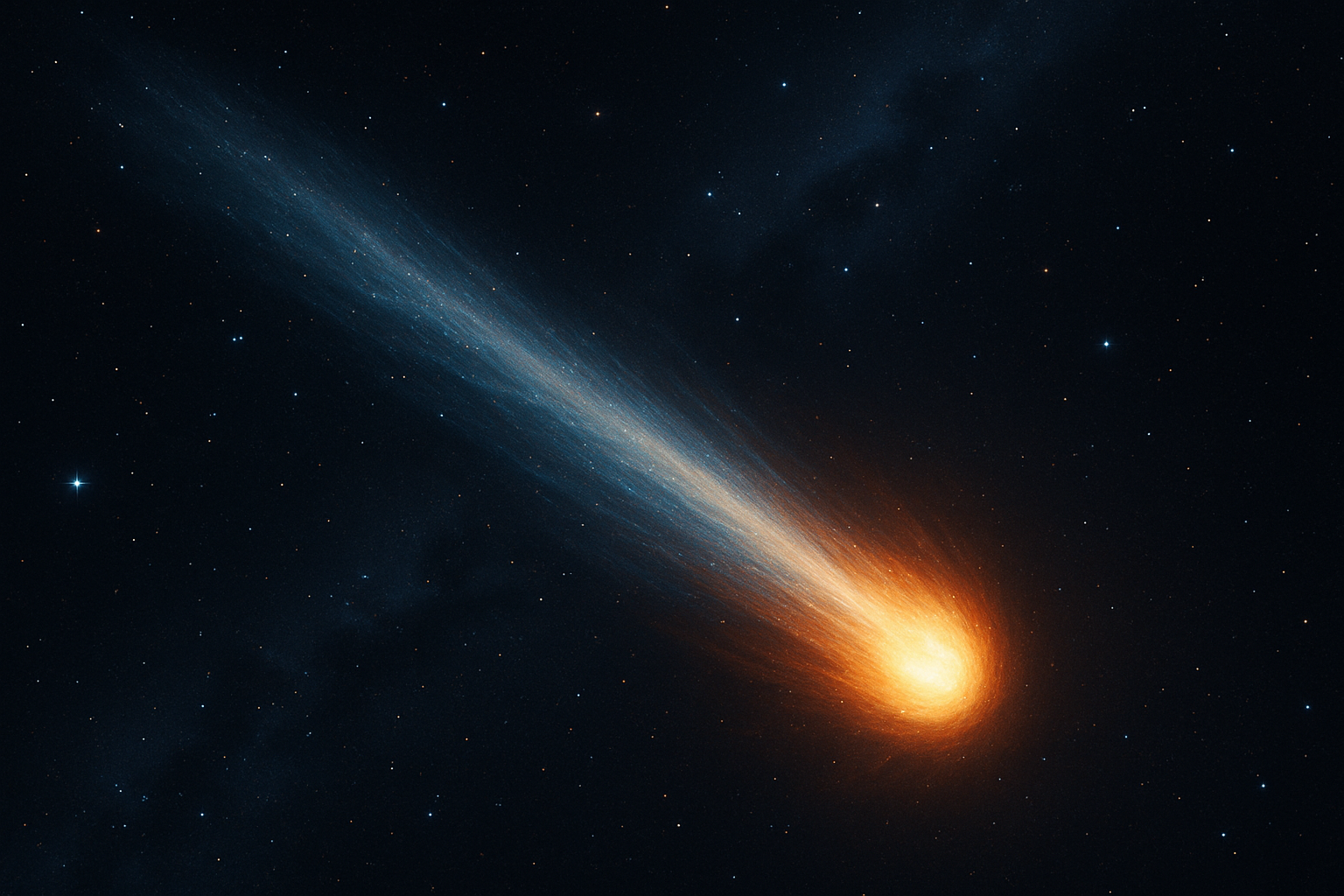
3I/ATLAS: The Third Interstellar Visitor
In July 2025, astronomers announced the discovery of a new
cosmic traveler — a faint object captured by the ATLAS telescope in Chile. At
first glance, it looked like a distant comet, but calculations quickly revealed
something extraordinary: this object was not bound to the Sun at all. It came
from interstellar space.
Named 3I/ATLAS, it is only the third confirmed
interstellar object ever observed, after ʻOumuamua in 2017
and 2I/Borisov in 2019. Each of these rare visitors offers a
glimpse into the chemistry and dynamics of other planetary systems, without us
ever having to leave our own.
What Makes 3I/ATLAS Interstellar?
When astronomers plot the orbit of an object, they can tell
whether it is gravitationally bound to the Sun.
3I/ATLAS is moving far too fast to be captured. Its orbit
traces back toward the constellation Sagittarius, near the
direction of the galactic center, before plunging into our neighborhood for a
brief visit.
Size, Speed, and Composition
Unlike ʻOumuamua, which showed no obvious coma, 3I/ATLAS is
behaving like a typical comet. Spectroscopic data reveal familiar molecules:
This makes it a natural body, with no need to invoke exotic
explanations.
Important Dates
Because of its timing and geometry, much of the best data
will come from spacecraft, including ESA and NASA missions, rather
than from Earth-based telescopes alone.
Why 3I/ATLAS Matters
Each interstellar visitor is a time capsule from
another star system. By studying their chemistry and behavior, astronomers can:
Some scientists have even suggested that interstellar comets
like 3I/ATLAS could seed life-bearing molecules across the
Milky Way.
About the “Alien” Speculation
As with ʻOumuamua, some popular media quickly speculated
about extraterrestrial technology. Rumors circulated about “strange
acceleration,” “unnatural brightness,” or “unknown materials.”
But the evidence says otherwise:
In other words, everything observed so far is consistent
with a natural interstellar comet. There is no scientific
indication of artificial origin.
Final Thought
3I/ATLAS is a reminder of how dynamic our galaxy truly is.
From time to time, chunks of ice and rock are flung out of distant planetary
systems and wander the interstellar void until chance brings them near another
star — in this case, ours.
Though it will never return, its brief visit offers
astronomers an invaluable chance to study alien material up close. Not a
spaceship, not a mystery beyond physics — but something perhaps even more
profound: a messenger from another world, carrying the history of a distant
sun.
